How To Grow An Indoor Garden When You Have No Outdoor Space
Why not spruce up your home?
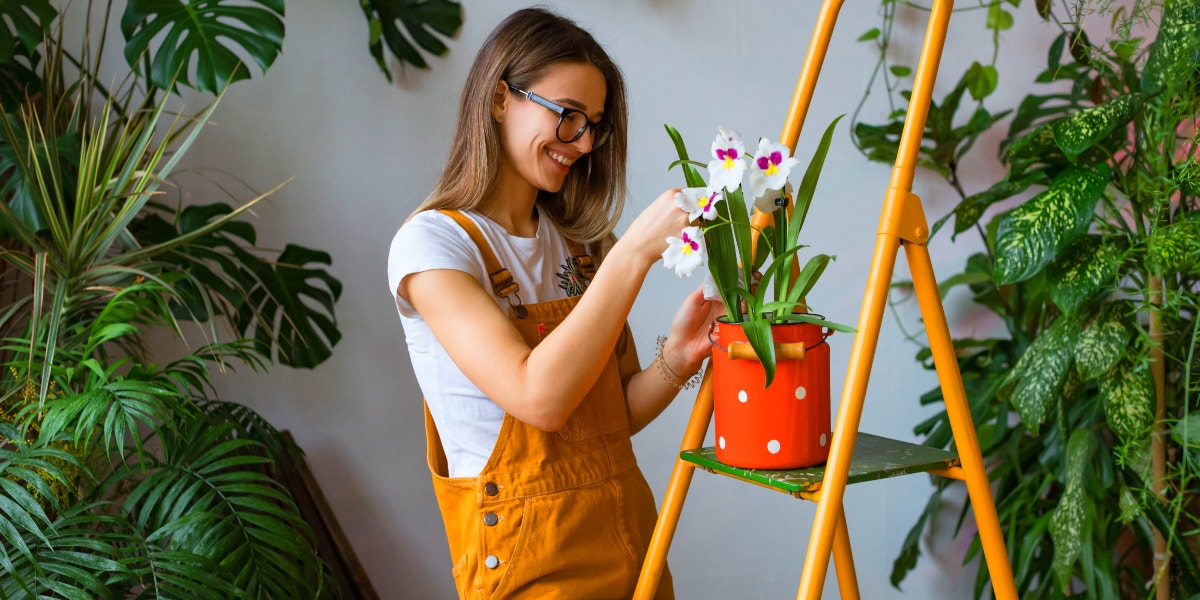 dimaberlin / shutterstock.com
dimaberlin / shutterstock.com While nearly worldwide quarantine has led to people cultivating skills — from cooking and baking to home improvement and gardening — not every home has an outdoor space to create a garden. For those people, a window or kitchen garden in the apartment may be the answer.
And as intimidating as it may seem at first, starting a garden is actually pretty easy.
“I would say that for a successful garden, 50 percent of the hard work is just remembering to water your plants. I always say that the first step to starting a successful garden is killing a few plants!” jokes Rise Gardens master gardener, Angelo Kelvakis.
Growing an indoor garden will involve trial and error. But everything does! Who didn’t ruin a cake the first time they tried to bake? Gardening is just like that.
As far as commitment goes, you just need to stay on top of watering, and like any other care-based activity, make sure you pay attention and listen to what your plants are saying. If they change colors, it's a nutrient issue; if they start to flop, it's a water issue.
Here's how to grow an indoor garden, and all the essential tools you'll need to help your plants flourish.
1. Use height if you're short on space.
When growing an edible garden in a small space, use height to your advantage. That means planting things that grow up, not out.
“The plants that come to mind are tomato, basil, peppers, and beans, opposed to cucumbers and squash which typically need a lot of room to spread out. Also, think about using a trellis or staking the plants to support them as they grow up,” recommends Craig Winer, co-founder and Senior Vice President of Garrett Wade.
Try these products:
- Ram-Pro Tent Garden Stakes: These steel rods have a galvanized finish, so it won't rust as it keeps plants sturdy and secure.
- Amagabeli Garden Trellis for Climbing Plants: This garden trellis will give he ight and support to potted plants, but it doubles as a fun decoration, too.
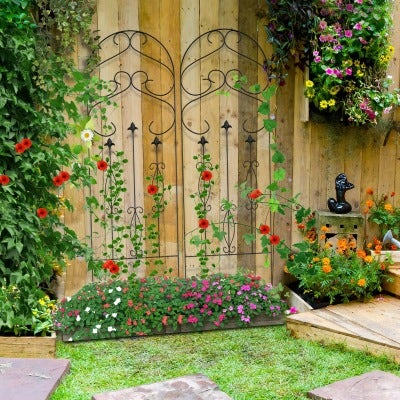
2. Remember that less is more.
This isn't the time to start out with 20 herbs and veggies at once! Instead, start small, choose a few favorite flavors, and go from there.
"Unless you have a lot of square feet, you aren’t likely to get a big yield from your crop. So, think about what are your favorite accents to dishes, not about trying to grow enough to replace the local farmers market,” adds Winer.
3. Growing herbs before vegetables or fruit.
For example, fresh-picked herbs add a lot to a salad or any dish.
Says Winer, “Personally, if I had to pick two plants for an edible garden, hands down it would be cherry tomatoes and basil. The taste of them together, freshly picked, with a touch of salt and olive oil, is summer!”
Try this product:
- Sprigbox Grow Kit: Sprigboxes are small wooden cubes that come with everything you need to grow your own little garden. You can choose from herbs like rosemary, basil, chili, lavender, and more. Just add water!
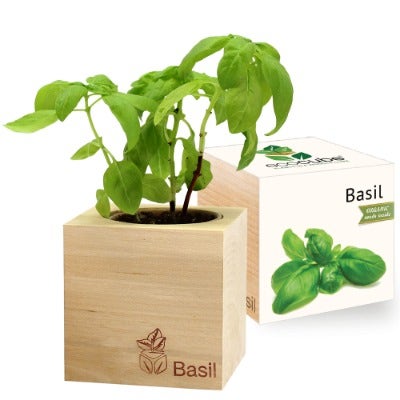
4. Or, grow your own tea.
If you're a tea lover, consider growing your own. And it goes a lot further than basic Earl Gray.
“Most nights in our house we make fresh herbal tea. It’s delicious and good for you,” adds Winer. “For example, fresh lemon balm helps with digestion and is a sleep aid. Chamomile, which not only is a sleep aid, has a lot of great antioxidants and lovely flowers. Lemon Verbena is another great plant for making tea; it’s said to help alleviate cold symptoms as well as ease aches and pains.” said Winer.
Try these products:
- Nature's Blossom Sow & Grow Seed Starter Kit: This kit lets you grow 4 different herbs at home for making your own herbal tea. Seeds include: catnip, mint, chamomile, and lemon balm.
- Garden Republic Indoor Herb Garden Seed Starter Kit: Love bedtime tea? Use this kit to make your own chamomile, mint, lavender, and lemon herbal teas.
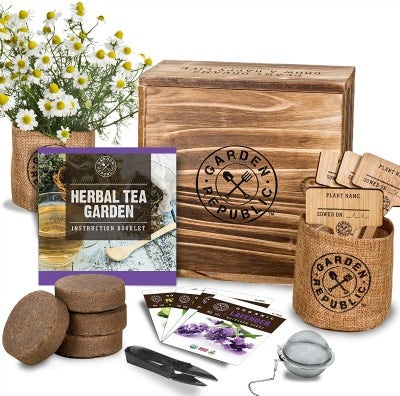
5. Find the right spot inside.
Choose the right spot for the pot and water inside. Suggets Pol Bishop, a horticulturist for Fantastic Gardeners, “Light and alongside water is the most crucial factor when it comes to a plant’s lifespan.”
So, before you go buy your potted plants, first make sure you find the perfect place to put them.
“This perfect place all depends on the species you want to look after. When it comes to light, plants fall into three categories: they will either need direct sunlight, partial sunlight, or shade,” Bishop adds.
"If you don’t have any well-lit areas inside your home, you might want to consider going for shade-loving species and vice versa. But what will happen if I place a shade loving plant in direct sunlight? Well, it will most likely turn brown and start dying out, and that’s why positioning is key.”
6. Use the correct type of light.
What's great about basement gardens is they don't actually require fancy greenhouse or horticulture equipment. Plus, they're out of the way from the rest of the home.
You can set yours up using a table sized to your liking, regular gardening pots, seeds of your choice and, most importantly, an overhead LED grow light strip.
“Install the LED grow light strip to hang roughly six inches above your potted plants. Strips are preferred over bulbs because they'll cast more consistent lighting,” suggests Shane Dutka, founder and general manager of Review Home Warranties.
Try these products:
- LED Grow Light Strips: Not only are these light strips perfect for plants, but each light has its own power switch to control the lights independently.
- AveyLum 5050 SMD LED Plant Strip Lights: These strips come with red and blue light; blue light promotes plant growth, while red light helps plants with flowering and germination.
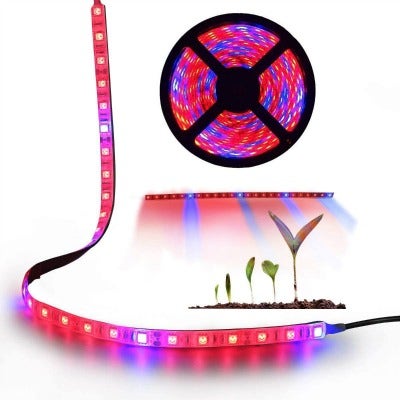
7. Also consider adding a light timer to your set up.
“Most indoor garden plants will need a minimum of 6 hours of light to grow. An automated light timer can help mimic the natural hours of sunlight the plants would otherwise be exposed to outdoors,” Dutka adds.
Another fun idea for utilizing light? Try a hydroponic garden.
Try this product:
AeroGarden Harvest 360 Indoor Hydroponic Garden: These are great to grow everything from herbs to veggies or flowers, and can be done indoors, year-round, even where there’s no sunlight.
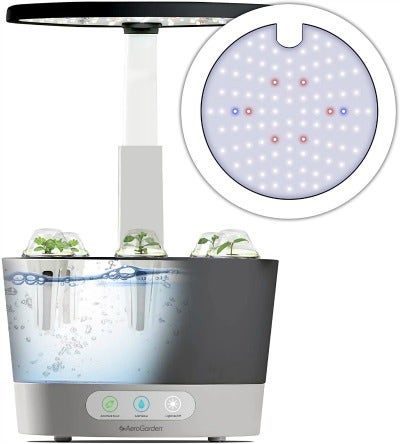
8. Don't overwater!
Position alone is not enough if you want your plant to thrive. You need to water them... but not too much!
“Most plants require regular watering in order to grow,” says Bishop. However, it’s good to note that overwatering your plant will usually be detrimental to its health. The remedy? “Before you start watering, check online to see how much water the plant you have needs, and how often it should be watered,” Bishop asserts.
Try these products:
- Bloem 2 Gallon Watering Can: Pretty, sleep and sturdy, this watering can is a good fit for any garden. Plus, it's size will allow you to store it easily when you're looking to save space.
- DIY Micro Automatic Drip Irrigation Kit: For a more automated approach to watering your plants, this system has a pump and 30-day timer in its automatic drip watering system. It also uses 70 percent less water than your usual drip heads and sprays.
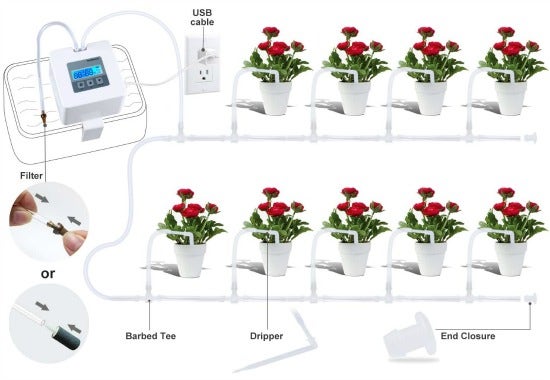
9. Pay attention to the details.
In a small garden, the details matter.
“Use well-made tools that aren’t going to damage your plants,” suggests Winer. Often, people just grab a pair of dull kitchen scissors to cut (hack really) herbs. Instead use a sharp, right sized scissor, small pruner, or hand pruner.
“For digging and planting, I’d recommend a cultivating set. Or, if you’d prefer not to bend so much, use 1/2-length digging tools,” Winer adds. "Make sure whatever you use is sized for your space and fits your hand comfortably."
Try these products:
- Gonicc 8" Titanium Pruning Shears
- Small Bypass Pruner
- VIVOSUN 6.5" Gardening Hand Pruner
- Sinoer 3PCS Garden Tool Set/Cultivator
- SE Prospector's Choice 12" Serrated Edge Digger
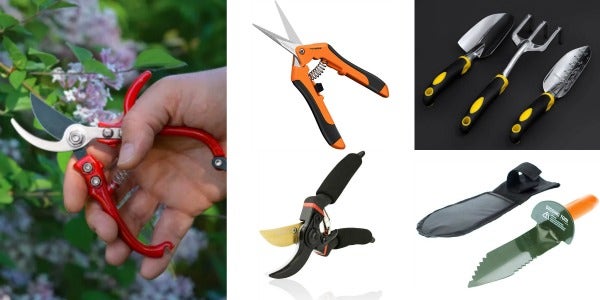
10. Keep a journal of what works, and what doesn't.
It's really important to keep a record of your gardening wins, and fails, so that you know what works and what doesn't.
"Think about keeping a journal of what works and what doesn’t. Note the amount of sun during the day, and how often you water. Most importantly, have fun!" says Winer.
Try this product:
- The Gardener's Logbook: This plant log book helps you keep track of each plant, from its beginning as a seed, and well into the growing season. It also includes helpful tips and websites for gardening.
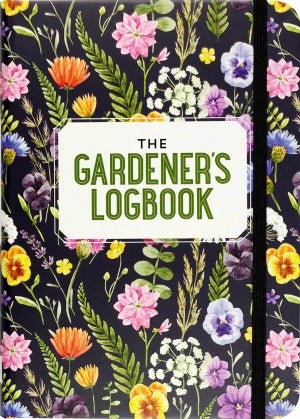
11. Learn about the benefits of having plants in your home.
While plants are certainly lovely to look at, there are also health benefits to having them in our homes.
A. Plants help us breathe.
It’s no secret that plants improve the quality of the air we breathe.
“By absorbing carbon dioxide and releasing oxygen, they bless us with nice fresh air,” Bishop brings up. “By playing a role in our physical health, they also influence our mental one as well. Healthy body, healthy mind as the saying goes.
Some scented flowers like jasmine and lavender bring with them extra benefits, aside from improved air quality. Their smell has been proven to lower anxiety and stress, and helps with getting some good shut-eye.”
B. Caring for houseplants releases happy chemicals.
Engaging in an active hobby makes you happier. This is probably known to most people. Well, the same goes for looking after house plants.
Adds Bishop, “The process behind this happiness stems from happy chemicals being released in your brain. These happy chemicals called endorphins help battle anxiety and depression. Therefore, having a fun, green hobby can do wonders for your mental health."
C. Beauty influences us internally.
This one is pretty self-explanatory. People are happier when they’re surrounded by aesthetically-pleasing and living things!
Concludes Bishop, “Being in the presence of pretty flowers can boost your productivity, especially if they’re bright-colored ones. There's a reason why office workers do a more efficient job when there are plants around the office!”
Aly Walansky is a NY-based lifestyles writer who focuses on health, wellness, and relationships. Her work appears in dozens of digital and print publications regularly. Visit her on Twitter or email her.
YourTango may earn an affiliate commission if you buy something through links featured in this article.

